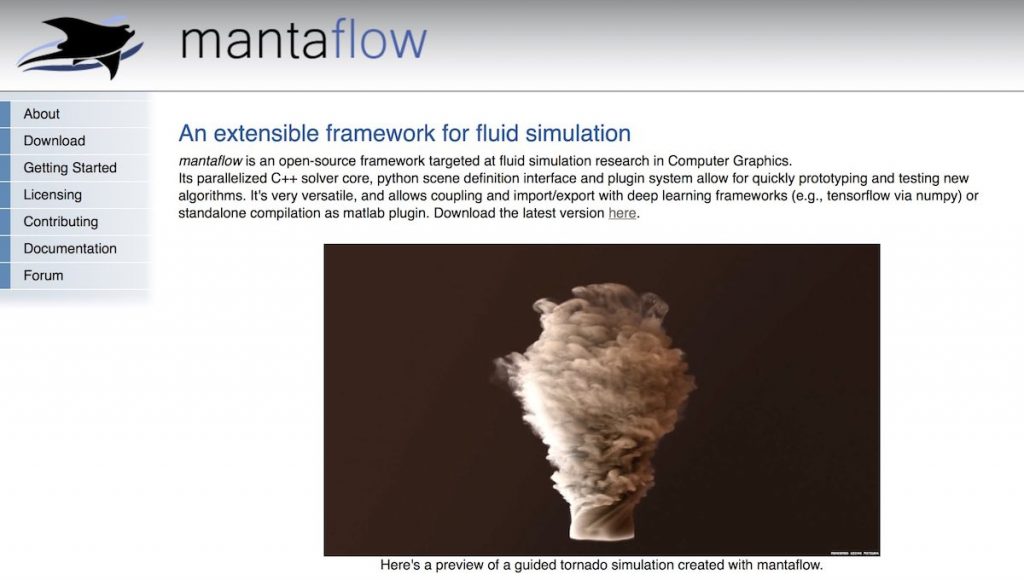For those that want to get started right away:
Introduction
Flow physics are extremely complex natural phenomena that have been the focus of many research topics over the last centuries. While they may seem like a strange and very specialized topic on first sight, they’re actually everywhere around us, e.g., think about the blood in our veins, the air we breathe, or the water we use for showering. For computer graphics, they’re likewise a very challenging phenomenon that pops up in all kinds of everyday situations, in due to its complexity, it’s a particularly interesting topic for deep learning techniques. At the same time, having powerful algorithms for physical phenomena could help in a variety of related topics from computer vision to medical applications.
In the following, we will discuss how to get started with fluid simulations and neural networks for deep learning using mantaflow in conjunction with tensorflow. The latest release (v0.11) of mantaflow comes with a set of data-transfer functions to exchange data between the two frameworks, and provides three examples (from as-simple-as-possible to complex and tightly coupled). The following will give an introduction to manta-TF coupling, and explain how to use the basic data transfer functions available in v0.11. A more in-depth discussions of the three coupling examples will follow in the next weeks.

The mantaflow.com start page with its tornado sim.
